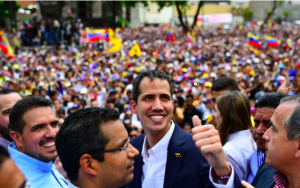On November 3rd, the day after Mexico’s famous holiday, “Day of the Dead,” protests erupted across Mexico City. The protest was about the number of murdered and missing women rising across Latin America. Protesters carried over one hundred purple crosses across the country’s capital. Each cross had the name of specific women who have been murdered or gone missing. The protest was titled “Dia de Muertas,” which translates to “Day of the Dead Women.” BBC’s article discussed the reason behind women being murdered as “femicide.” “Femicide, the murder of a woman because of her gender, kills 12 women daily in Latin America according to the UN” (BBC, Violence Against Women: ‘Day of the Dead Women’ Protest in Mexico City). The protesters laid large posters across the city’s ground showcasing over forty specific women’s faces who have been murdered or gone missing. A highlight of the posters was one that said, “Not one more.” The protest was led by the group, “Voices of Absence.” Frida Guerrara, a journalist and activist, led the demonstration.
The main reason behind the protest is for women to have their voices be heard after too many have been killed because of their gender. The protest also attempted to raise awareness and “[demand] justice through the legal system” (BBC). As mentioned before, “femicide” has been a massive issue across Latin America, and the world, and the protest successfully brought people’s attention to this problem. “Latin America is home to 14 of the 25 countries with the highest rates of femicide in the world, and 98% of gender-related killings go unprosecuted” (BBC). In 2018, the United Nations started their campaign to end gender-violence in Latin America. The United Nations’ deputy head, Amina Mohammed, “… praised Mexico, among other Latin American countries, for having the ‘political courage to confront and end femicide” (BBC). A similar protest occurred in Mexico back in 2016. Instead of posters, protesters and activists laid out high heels and pink crosses to remember the women who were murdered.
In BBC’s article, they portray Latin America as a dangerous region to be in. The article mainly discusses how the majority of Latin American countries are extremely high in “femicide” and for violence, in general. The article also portrays Latin America as a region that needs plenty of help. The article discusses the United Nations’ impact in Mexico and other Latin American countries. For example, as discussed before, the UN’s campaign and initiative to eliminate gender-violence in Latin America is still a work in progress, clearly, but will eventually and ultimately help this struggling region of the world.
In relation to our class, the article shows that there is still a lot of chaos in Latin America today. The article shows how women are still being mistreated, even violently, as they were throughout revolutionary history. To summarize, the protest shows that there is still gender disparity, in incredibly unfortunate ways of violence, across Latin America and the world. Moreover, it proves that male dominance still occurs and the stereotype of a superior and inferior gender are very much active.
Article:
https://www.bbc.com/news/world-latin-america-50287993

